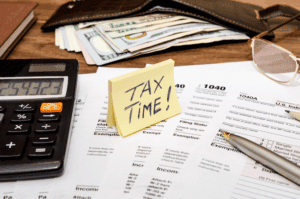
However, interest expense also includes the $558.39 of amortized discount in the first six months. Using the straight-line method, we can amortize the $12,000 bond premium to be $4,000 per year for each of the three years of bond periods. This account is a non-operating or “other” expense for the cost of borrowed money or other credit. When bond interest rates are discussed, the term basis point is often used. For example, if a market interest rate increases from 6.25% to 6.50%, the rate is said to have increased by 25 basis points. The following table summarizes the effect of the change in the market interest rate on an existing $100,000 bond with a stated interest rate of 9% and maturing in 5 years.

Presentation of Unamortized Bond Discounts
The accounting treatment of this premium is to amortize it over the Bookkeeping for Veterinarians life of the bond. Amortization reduces the bond’s book value on the balance sheet and is recognized as an adjustment to interest expense on the income statement. This process aligns the interest expense with the bond’s net carrying amount, reflecting a more accurate cost of borrowing over the period. For example, if a company issues a $1,000,000 bond at a 5% coupon rate when the market rate is 4%, and it sells for $1,050,000, the $50,000 premium is amortized until the bond matures. When a company issues bonds, investors may pay more than the face value of the bonds when the stated interest rate on the bonds exceeds the market interest rate.

Financial Accounting

As the market rate is also 6%, so company can issue bonds at par value. This amount must be amortized over the life of bonds, it is the balancing figure between interest expense and interest paid to investors (Please see the example below). At the maturity date, bonds carry amount must be equal to bonds par value.

#1 – Straight Line Method
To illustrate this, let’s take the example of Company ABC, which issues a 5-year, $100,000 bond with a stated interest rate of 5% and a market interest rate of 4%. Using the straight-line method, the annual premium amortization would be $800 per year, calculated by dividing the total premium of $4,000 by the bond’s life of 5 years. The discounted price is the total present value how to find premium on bonds payable of total cash flow discounted at the market rate. The difference between cash receive and par value is recorded as discounted on bonds payable.
- Premium on bonds payable is the excess amount by which bonds are issued over their face value.
- The Motley Fool reaches millions of people every month through our premium investing solutions, free guidance and market analysis on Fool.com, top-rated podcasts, and non-profit The Motley Fool Foundation.
- Using the straight-line method, the annual premium amortization would be $800 per year, calculated by dividing the total premium of $4,000 by the bond’s life of 5 years.
- Hence, we need to make the amortization of the bond discount in order to have the carrying value of bonds payable equaling the face value of the bond at the end of the bond maturity.
The discount increases bond payroll interest expense when we record the semiannual interest payment. Company will pay a premium if they decide to buyback as the investor will lose some part of their interest income. It will happen when the market rate is declining, company can access the fund with a lower interest rate, so they can retire the bond early to save interest expense. Bond price is the present value of future cash flow discount at market interest rate.
- When bonds are issued at a premium, the cash received exceeds the face value, leading to a premium on bonds payable.
- Double Entry Bookkeeping is here to provide you with free online information to help you learn and understand bookkeeping and introductory accounting.
- Well, like we learned before, we would do the 50,000 times 108%, which is 1.08.
- For example, assume a company wants to issue a $1,000, 10% bond to the public when the market rate of interest is 8 percent.
- Under the effective interest rate method, we need to determine the effective interest rate using the cash flow provided by the bonds throughout the periods.
- Bonds are transferable, and an investor can sell their bond before the maturity date.
- The unamortized bond premium is the part of the bond premium that will be amortized (written off) against expenses in the future.
- Under the effective interest rate method the amount of interest expense in a given accounting period will correlate with the amount of a bond’s book value at the beginning of the accounting period.
- Everything you need to know to calculate an interest rate with the present value formula.
- When a bond is issued for more than its face value, the excess amount is referred to as a bond premium.
- To obtain the proper factor for discounting a bond’s interest payments, use the column that has the market’s semiannual interest rate “i” in its heading.
- To a business, a bond payable represents a series of regular interest payments together with a final principal repayment at the maturity date.
- The difference between the carrying value of the bonds and the repurchase price is called gain or loss on bond retirement.
The investors are prepared to pay the face value 100,000 as the bond rate is the same as the market rate. It is important to note that there is an inverse relationship between the market interest rate (i) and the bond price. When the market interest rate increases, the bond price decreases and vice versa. The April 30 entry in the next year would include the accrued amount from December of last year and interest expense for Jan to April of this year. For example, we issue $500,000, three-year, 6% bonds for $512,000 instead. We need to pay interest at the end of each year during the period of the bonds.
